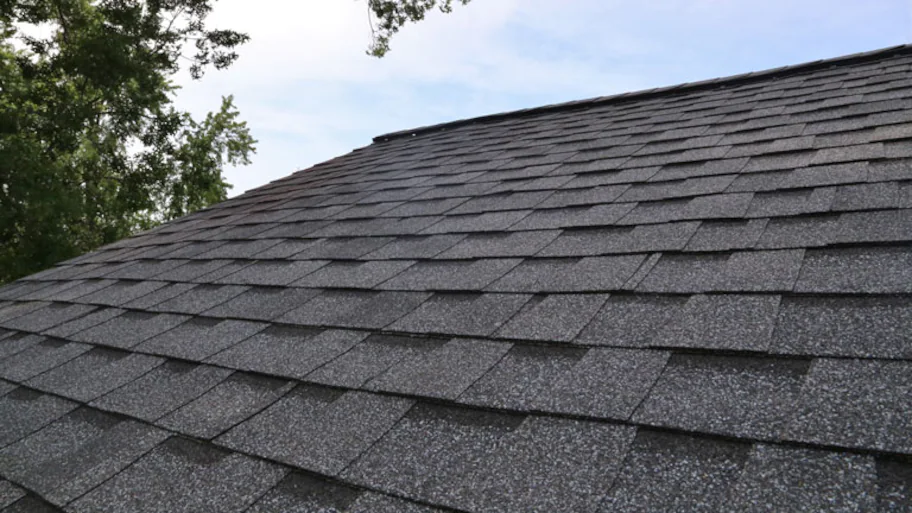The Advantages of Working with Gainesville FL Roofing Companies
The Advantages of Working with Gainesville FL Roofing Companies
Blog Article
Finest Practices for Ensuring Proper Roof Ventilation
Making sure appropriate roof covering air flow is essential for the longevity and effectiveness of a roof system. A balanced intake and exhaust vent proportion, generally 1:300, plays a critical role, with intake vents preferably positioned at the reduced side of the roof for great air access and exhaust vents at the peak for warm air exit. Routine inspections to determine clogs and maintain clear air flow are critical. Additionally, maintaining insulation far from vents is critical to avoid air flow limitation. Comprehending these fundamental components establishes the phase for even more thorough insights into installment and maintenance practices that can dramatically enhance your roof system's efficiency.
Understand Air Flow Basics
Properly comprehending ventilation essentials is essential for ensuring the long life and performance of roof covering systems. Effective air flow mitigates dampness build-up and temperature level extremes in the attic room, both of which can result in considerable architectural damages in time. A well-ventilated roofing system assists in stopping typical concerns such as mold and mildew development, timber rot, and ice dams, which can endanger the stability of the roofing materials and the underlying structures.
The main objective of ventilation is to assist in the motion of air, enabling a regular exchange in between the outdoor and indoor settings. This balance is attained with a combination of intake and exhaust vents that collaborate to keep optimal air flow. Consumption vents, usually situated along the soffits or eaves, enable fresh air to go into the attic room, while exhaust vents, frequently positioned at or near the roofing ridge, enable hot, moist air to leave.
Secret elements affecting the performance of roofing system air flow consist of correct placement, ample sizing, and ensuring that both intake and exhaust vents are unhampered. Regular examination and maintenance are crucial to identify prospective blockages, damages, or inadequacies in the air flow system, consequently safeguarding the roofing system's performance and longevity.
Kinds Of Roofing System Vents
Roof vents play a critical duty in preserving efficient attic room ventilation and, by expansion, the total health and wellness of the roof system. Numerous kinds of roof vents are offered, each with special advantages customized to certain roofing demands. Ridge vents, for instance, are installed along the roof's top, enabling warm, humid air to leave from the attic. They supply constant ventilation and blend flawlessly with the roofline, making them both effective and cosmetically pleasing.

Soffit vents are mounted under the eaves and work in tandem with roofing vents to make certain a well balanced consumption and exhaust system. By permitting cooler air to get in from below, soffit vents help with the expulsion of warm air through top vents. Gable vents, situated on the outside wall surfaces of the attic room, deal an additional effective solution, especially in homes with saddleback roofs.
Evaluate Your Present Ventilation

Next, take into consideration the age and condition of your roof materials and ventilation components. Older systems might not follow present building regulations or may have degraded over time, decreasing their effectiveness. Conduct a complete evaluation to recognize any kind of indicators of deterioration, such as corrosion, damages, or spaces that might compromise the system's efficiency.
Furthermore, determine the attic room temperature level and moisture degrees. Heats and humidity can show poor air flow - roofing companies. Make use of a hygrometer and thermometer to get exact analyses, comparing them with outside problems. Consistent disparities suggest potential concerns that require addressing.
Setup Best Practices
Reliable installation of roofing ventilation systems is critical for making certain optimum efficiency and durability. Appropriate installment begins with comprehending the certain air flow requirements of the building and the roofing it covers. This entails computing the proper ratio of weblink intake to wear down vents, commonly sticking to the 1:300 guideline, which states one square foot of air flow for every 300 square feet of attic room floor room.

The placement of vents is just as important. Consumption vents need to be installed at the roof covering's reduced side, frequently in the soffits, to enable cool air to go into. Exhaust vents, on the various other hand, must be mounted near or at the roof's peak to assist in the departure of cozy, damp air. This creates a natural airflow that assists maintain temperature level and moisture equilibrium within the attic room area.
Seal all vent connections carefully to stop air leakages and potential water infiltration. Use high-grade products and follow manufacturer standards to make certain durability and effectiveness. Furthermore, incorporating ridge vents with baffles can significantly improve air flow effectiveness by protecting against wind-driven rain and snow from getting in the attic room.
Ultimately, precise setup of roof ventilation systems alleviates possible problems such as mold development, ice dams, and architectural damages, making certain the roofing's integrity and the building's overall health.
Regular Maintenance Tips
Uniformity in maintenance methods is fundamental to ensuring the long-lasting efficiency of roof air flow systems. Regular examinations hop over to here are vital, preferably done biannually-- in the springtime and autumn. During these evaluations, make certain that vents are without debris, nests, and other obstructions that could hinder air flow. Look for any type of signs of wetness buildup or mold, as these can suggest inappropriate ventilation or leakages (gainesville fl roofing companies).
Use a soft brush or a vacuum to remove dust and particles from consumption and exhaust vents. Be careful not to damage the vent screens or louvers throughout the process.
Appropriate insulation is similarly important. Make certain that attic room insulation does not obstruct the vents, as this can drastically limit air movement. Rearrange or replace it to keep an efficient obstacle. if any insulation has actually shifted or cleared up.
Finally, replace any kind of damaged or missing elements promptly. Broken vents, broken shingles, or deteriorated flashing can all contribute to inadequate ventilation and should be addressed immediately. Routine upkeep makes sure that the roofing air flow system works optimally, thereby expanding the life-span of the roofing system itself.
Final Thought
Guaranteeing appropriate roof air flow is critical for preserving the efficiency and sturdiness of a roof. Adherence to the 1:300 intake and exhaust air vent ratio, combined with the tactical placement of vents, is vital. Regular semiannual evaluations, particles cleansing, and guaranteeing insulation does not obstruct air movement are crucial techniques. Applying these finest methods will certainly promote a well-ventilated roof, thereby alleviating prospective issues related to moisture buildup and excessive heat, inevitably extending the roofing's lifespan.
A well balanced consumption and exhaust vent ratio, frequently 1:300, plays a crucial function, with intake vents ideally placed at the reduced edge of the roof covering for cool air entrance and exhaust vents at the height for warm air leave. Intake vents, usually located along the soffits or eaves, enable fresh air to enter the attic space, while exhaust vents, commonly positioned at or near the roofing ridge, enable warm, humid air to leave.
Soffit vents are set up under the eaves and job in tandem with roof vents to make sure a balanced intake and exhaust system. By permitting cooler air to enter from below, soffit vents promote the expulsion of warm air through upper vents. Adherence to the 1:300 intake and exhaust vent ratio, combined with the critical positioning of vents, is necessary.
Report this page